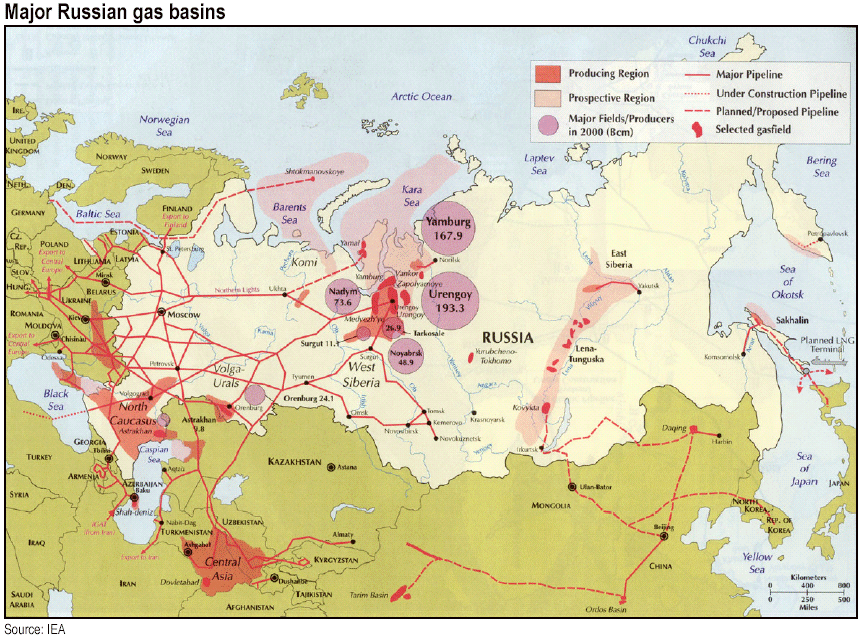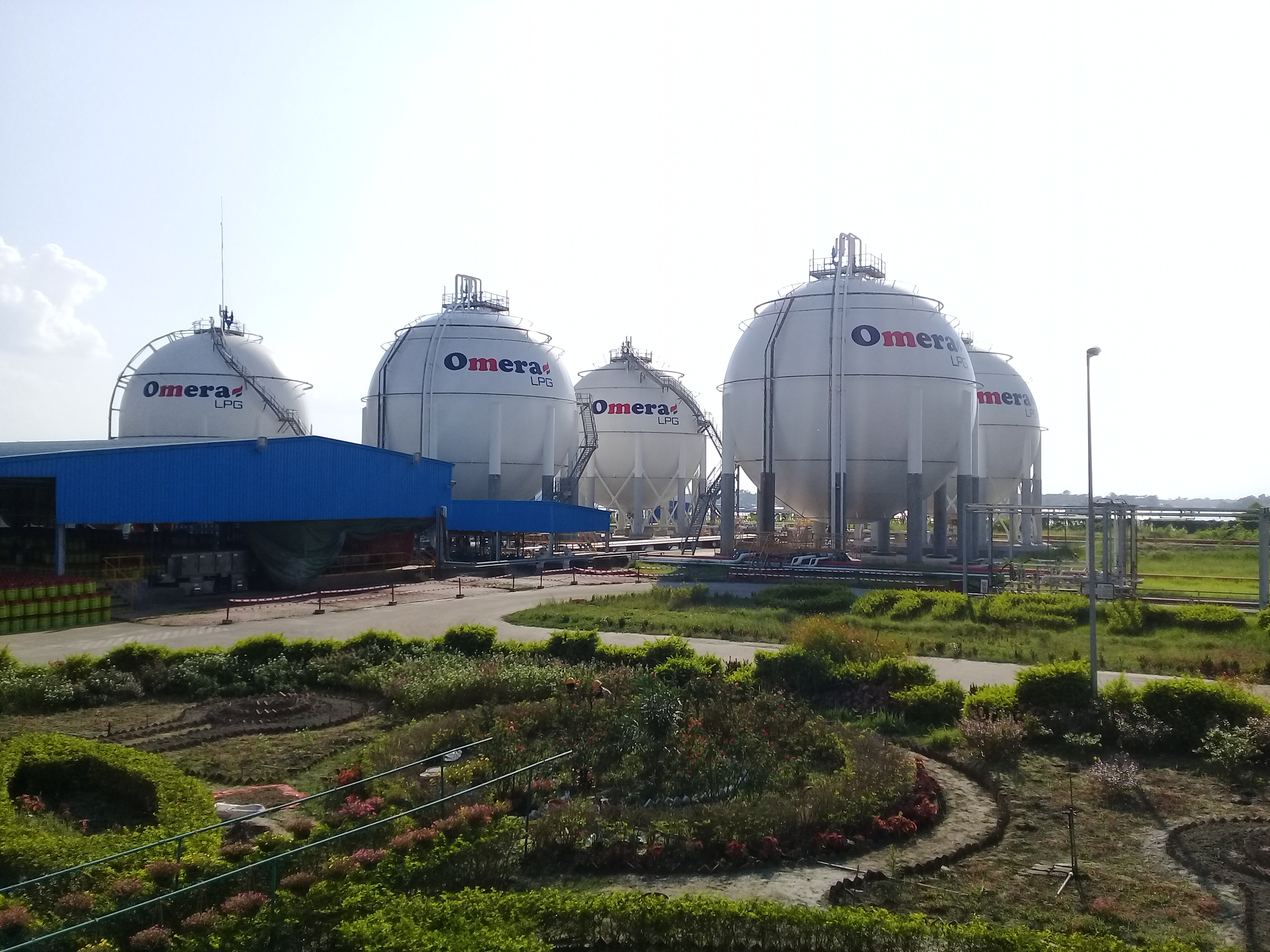|
Salym Petroleum Development
Salym Petroleum Development, established in 1996, (Salym Petroleum Development, Salym Petroleum, SPD) is a joint venture between Gazprom Neft and Shell plc for development of the Salym group of oil fields in West Siberia. It is a joint-stock company incorporated under Dutch law (). History Since 2003, Salym Petroleum Development (SPD) has been involved in the integrated development of three oil fields: West Salym, Upper Salym, and Vadelyp. They are located in the Khanty-Mansi Autonomous Okrug, southwest of Surgut and of Salym, respectively. The total recoverable oil reserves were at one point estimated to be 140 million tons, and the total area of licenses is about . In the summer of 2006 SPD exceeded an annual production volume 1 million tons, and In 2014 the company produced about 6.55 million tons of oil. Activities A liquefied petroleum gas (LPG) plant was commissioned in May 2012 for associated petroleum gas processing. The project was implemented by a partner company, ... [...More Info...] [...Related Items...] OR: [Wikipedia] [Google] [Baidu] |
Private Company
A privately held company (or simply a private company) is a company whose shares and related rights or obligations are not offered for public subscription or publicly negotiated in the respective listed markets, but rather the company's stock is offered, owned, traded, exchanged privately, or Over-the-counter (finance), over-the-counter. In the case of a closed corporation, there are a relatively small number of shareholders or company members. Related terms are closely-held corporation, unquoted company, and unlisted company. Though less visible than their public company, publicly traded counterparts, private companies have major importance in the world's economy. In 2008, the 441 list of largest private non-governmental companies by revenue, largest private companies in the United States accounted for ($1.8 trillion) in revenues and employed 6.2 million people, according to ''Forbes''. In 2005, using a substantially smaller pool size (22.7%) for comparison, the 339 companies on ... [...More Info...] [...Related Items...] OR: [Wikipedia] [Google] [Baidu] |
Khanty-Mansi Autonomous Okrug
Khanty-Mansi Autonomous Okrug–Yugra (Russian and Mansi: Ханты-Мансийский автономный округ — Югра, ''Khanty-Mansiysky avtonomny okrug — Yugra;'' Khanty: Хӑнты-Мансийской Aвтономной Округ) or Khantia-Mansia is a federal subject of Russia (an autonomous okrug of Tyumen Oblast). It has a population of 1,532,243 as of the 2010 Census. The peoples native to the region are the Khanty and the Mansi, known collectively as Ob-Ugric people, but today the two groups only constitute 2.1% of the region's population. The local languages, Khanty and Mansi, enjoy special status in the autonomous okrug and along with their distant relative Hungarian are part of the Ugric branch of the Finno-Ugric languages. Russian remains the only official language. In 2012, the majority (51%) of the oil produced in Russia came from Khanty-Mansi Autonomous Okrug, giving the region great economic importance in Russia and the world. It border ... [...More Info...] [...Related Items...] OR: [Wikipedia] [Google] [Baidu] |
Gazprom Subsidiaries
PJSC Gazprom ( rus, Газпром, , ɡɐzˈprom) is a Russian majority state-owned multinational energy corporation headquartered in the Lakhta Center in Saint Petersburg. As of 2019, with sales over $120 billion, it was ranked as the largest publicly listed natural gas company in the world and the largest company in Russia by revenue. In the 2020 ''Forbes'' Global 2000, Gazprom was ranked as the 32nd largest public company in the world. The Gazprom name is a contraction of the Russian words ''gazovaya promyshlennost'' (, gas industry). In January 2022, Gazprom displaced Sberbank from the first place in the list of the largest companies in Russia by market capitalization. Gazprom is vertically integrated and is active in every area of the gas industry, including exploration and production, refining, transport, distribution and marketing, and power generation. In 2018, Gazprom produced twelve percent of the global output of natural gas, producing 497.6 billion cubic meters ... [...More Info...] [...Related Items...] OR: [Wikipedia] [Google] [Baidu] |
Oil Companies Of Russia
An oil is any nonpolar chemical substance that is composed primarily of hydrocarbons and is hydrophobic (does not mix with water) & lipophilic (mixes with other oils). Oils are usually flammable and surface active. Most oils are unsaturated lipids that are liquid at room temperature. The general definition of oil includes classes of chemical compounds that may be otherwise unrelated in structure, properties, and uses. Oils may be animal, vegetable, or petrochemical in origin, and may be volatile or non-volatile. They are used for food (e.g., olive oil), fuel (e.g., heating oil), medical purposes (e.g., mineral oil), lubrication (e.g. motor oil), and the manufacture of many types of paints, plastics, and other materials. Specially prepared oils are used in some religious ceremonies and rituals as purifying agents. Etymology First attested in English 1176, the word ''oil'' comes from Old French ''oile'', from Latin ''oleum'', which in turn comes from the Greek (''elaion'') ... [...More Info...] [...Related Items...] OR: [Wikipedia] [Google] [Baidu] |
YouTube
YouTube is a global online video platform, online video sharing and social media, social media platform headquartered in San Bruno, California. It was launched on February 14, 2005, by Steve Chen, Chad Hurley, and Jawed Karim. It is owned by Google, and is the List of most visited websites, second most visited website, after Google Search. YouTube has more than 2.5 billion monthly users who collectively watch more than one billion hours of videos each day. , videos were being uploaded at a rate of more than 500 hours of content per minute. In October 2006, YouTube was bought by Google for $1.65 billion. Google's ownership of YouTube expanded the site's business model, expanding from generating revenue from advertisements alone, to offering paid content such as movies and exclusive content produced by YouTube. It also offers YouTube Premium, a paid subscription option for watching content without ads. YouTube also approved creators to participate in Google's Google AdSens ... [...More Info...] [...Related Items...] OR: [Wikipedia] [Google] [Baidu] |
Enhanced Oil Recovery
Enhanced oil recovery (abbreviated EOR), also called tertiary recovery, is the extraction of crude oil from an oil field that cannot be extracted otherwise. EOR can extract 30% to 60% or more of a reservoir's oil, compared to 20% to 40% using primary and secondary recovery. According to the US Department of Energy, carbon dioxide and water are injected along with one of three EOR techniques: thermal injection, gas injection, and chemical injection. More advanced, speculative EOR techniques are sometimes called quaternary recovery. Methods There are three primary techniques of EOR: gas injection, thermal injection, and chemical injection. Gas injection, which uses gases such as natural gas, nitrogen, or carbon dioxide (CO2), accounts for nearly 60 percent of EOR production in the United States. Thermal injection, which involves the introduction of heat, accounts for 40 percent of EOR production in the United States, with most of it occurring in California. Chemical injection, ... [...More Info...] [...Related Items...] OR: [Wikipedia] [Google] [Baidu] |
RussNeft
Russneft () is a Russian oil company headquartered in Moscow which was established by Mikhail Gutseriev in 2002. It is a member of the SAFMAR industrial and financial group. Background Russneft was founded in September 2002 by Mikhail Gutseriev, a Russian businessperson and philanthropist, with support from the Swiss company Glencore. It included early oil-production operations in West Siberia, Ulyanovsk, the Saratov and Penza regions, Udmurtia, and the Komi Republic. Russneft purchased oil processing and distribution plants in Orenburg Oblast and Krasnodar Krai regions in 2006, becoming a vertically-integrated oil holding company. It is one of Russia's top ten vertically-integrated oil companies, producing 10 million tons and processing nine million tons. Some of Russneft's assets were transferred to the oil-processing holding companies Forteinvest and NK Neftisa, both owned by Gutseriev. The Khanty-Mansi oil company and the Nazymskaya oil and gas exploration expedition, both ... [...More Info...] [...Related Items...] OR: [Wikipedia] [Google] [Baidu] |
Liquefied Petroleum Gas
Liquefied petroleum gas (LPG or LP gas) is a fuel gas which contains a flammable mixture of hydrocarbon gases, specifically propane, propylene, butylene, isobutane and n-butane. LPG is used as a fuel gas in heating appliances, cooking equipment, and vehicles. It is increasingly used as an aerosol propellant and a refrigerant, replacing chlorofluorocarbons in an effort to reduce damage to the ozone layer. When specifically used as a vehicle fuel, it is often referred to as autogas or even just as gas. Varieties of LPG that are bought and sold include mixes that are mostly propane (), mostly butane (), and, most commonly, mixes including both propane and butane. In the northern hemisphere winter, the mixes contain more propane, while in summer, they contain more butane. In the United States, mainly two grades of LPG are sold: commercial propane and HD-5. These specifications are published by the Gas Processors Association (GPA) and the American Society of Testing and Ma ... [...More Info...] [...Related Items...] OR: [Wikipedia] [Google] [Baidu] |
Surgut
Surgut ( rus, Сургу́т, p=sʊrˈgut; Khanty: Сәрханӆ, ''Sərhanł'') is a city in Khanty-Mansi Autonomous Okrug, Russia, located on the Ob River near its junction with the Irtysh River. It is one of the few cities in Russia to be larger than the capital or the administrative center of its federal subject in terms of population, economic activity, and tourist traffic. Population: History The name of the city, according to one tradition, originates from the Khanty words ''sur'' 'fish' and ''gut'' 'hole, pit'. It was founded in 1594 by order of Tsar Feodor I. Surgut at the end of the 16th century was a small fortress with two gates and five towers, one of which had a carriageway. In 1596 the Gostiny Dvor was built. In the 17th and 18th centuries it was a center of the Russian development of Siberia. The fortification, built of strong wood, was located on the cape, so that it was impossible to approach it unnoticed either from the river or from the land. In the c ... [...More Info...] [...Related Items...] OR: [Wikipedia] [Google] [Baidu] |
West Siberian Economic Region
West Siberian economic region (russian: За́падно-Сиби́рский экономи́ческий райо́н; tr.: ''Zapadno-Sibirsky ekonomichesky rayon'') is one of twelve economic regions of Russia. This vast plain—marshy and thinly populated in the north, hilly in the south—is of growing economic importance, mostly due to the abundance of natural resources: oil, coal, wood, water. There are vast oilfields in the West Siberian petroleum basin, and Russia's largest oil refinery is in Omsk. The Kuznetsk Basin around Kemerovo and Novokuznetsk is a center of coal mining, and the production of iron, steel, machinery, and chemicals. Logging is a significant industry throughout the region. Hydroelectric stations dam the Ob near Novosibirsk and Kamen-na-Obi. The navigable Ob-Irtysh watershed covers most of this area, and the southern part is also criss-crossed by the Trans-Siberian, South Siberian and Turkestan-Siberian rail lines. Agricultural products include wheat, ... [...More Info...] [...Related Items...] OR: [Wikipedia] [Google] [Baidu] |
Joint Venture
A joint venture (JV) is a business entity created by two or more parties, generally characterized by shared ownership, shared returns and risks, and shared governance. Companies typically pursue joint ventures for one of four reasons: to access a new market, particularly Emerging market; to gain scale efficiencies by combining assets and operations; to share risk for major investments or projects; or to access skills and capabilities. According to Gerard Baynham of Water Street Partners, there has been much negative press about joint ventures, but objective data indicate that they may actually outperform wholly owned and controlled affiliates. He writes, "A different narrative emerged from our recent analysis of U.S. Department of Commerce (DOC) data, collected from more than 20,000 entities. According to the DOC data, foreign joint ventures of U.S. companies realized a 5.5 percent average return on assets (ROA), while those companies’ wholly owned and controlled affiliates ( ... [...More Info...] [...Related Items...] OR: [Wikipedia] [Google] [Baidu] |






